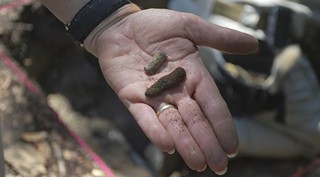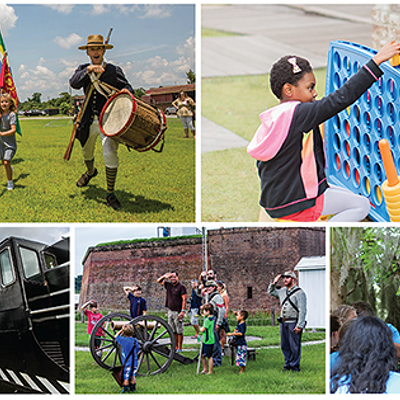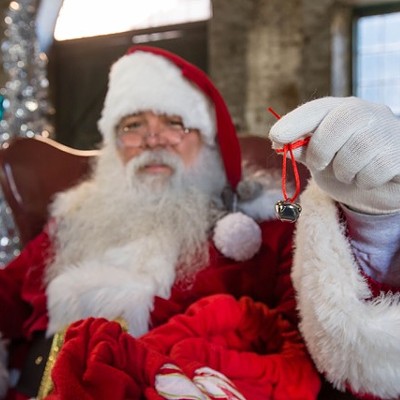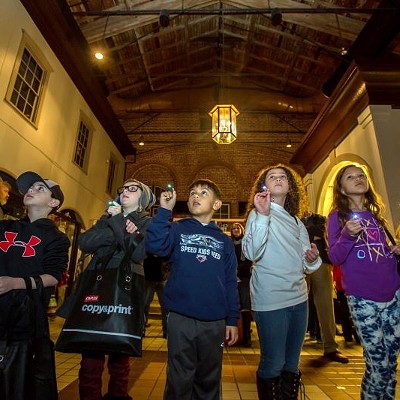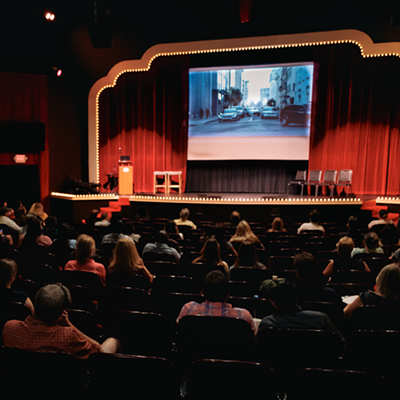Thomas Square Park, right next to the Bull Street Library, is considered by most of us today to be very near the heart of downtown Savannah.
During the Revolutionary War, however, this area was not even on the outskirts of town, but far into the rural boondocks.
It was near this spot, Coastal Heritage Society (CHS) archaeologists believe, that the allied force of American colonists and their French allies encamped before their ill-fated 1779 frontal assault on the British defensive line holding the town.
Funded by a grant from the National Park Service, CHS spent most of last week digging four by eight foot test pits into one corner of Thomas Square Park looking for "smoking gun" artifacts of that military presence.
"They camped for a couple of weeks prior to attacking the city," says Rita Elliott, curator and director of archaeology for CHS. "With 8000 troops living out here, they would have to eat for several weeks and go to the bathroom, things like that," thus leaving behind traces of daily life.
A similar dig in Effingham County in 2000 found proof of a British Revolutionary War encampment - "Rev War" in archaeologist slang - including cooking pits that used barrel hoops as grills.
"We also found broken bottles, uniform buttons, musket balls - all signatures of a military camp," says Dan Elliott, CHS staffer and president of the nonprofit Lamar Institute.
Unfortunately, the test pits at Thomas Square Park only found evidence of human presence down to the early 1800s, as gauged by the color of the dirt and by the artifacts found. Everything below that was found to be "sterile" dirt, or unaffected by humans.
But what made CHS think these might have been the military campsites they were looking for? After a sweep by ground-penetrating radar showed some anomalies in the area, more hands-on tests showed some encouraging results.
"We did some shovel tests throughout the park and right in this corner we started picking up all these colonial period artifacts," says Rita Elliott. "Because this was so far out of town, we really shouldn't be getting that from people living here. That suggested we're getting some encampments."
While the CHS dig didn't discover proof of any Siege of Savannah encampment at this particular site, they did indeed discover plenty of artifacts -- including while we were there researching this story. A typical archaeological method is to "screen," or have one person throw shovelfuls of dirt into a wire sieve or screen, which isolates anything larger than soil.
"In earlier layers we're finding little bits of dishes," Elliott says while screening. "By the glaze in dishes we can tell how old they are. Certain types of dishes were made at certain times. We also found a lot of square nails, which are older than modern wire nails."
As if on cue, she reaches into the screen and pulls out a square nail - the first time human hands have touched it since the early 1800s.
A few minutes later, Elliott and team discover something even more exciting: A colonial pipe stem. (Smoking was apparently all the rage in colonial times; pipe stems are actually a fairly common find at colonial digs.)
"They had white pipes made out of kaolin. They'd be long and have the bowl with tobacco makers marks on stem," she says. "The cool thing about this is archaeologists years ago figured out that over the years the hole got smaller and smaller because the stems got longer and longer. So they figured out a formula for measuring the hole and getting a date for that pipe stem."
This CHS dig follows on the heels of another Park Service funded project, which resulted in the finding of the remains of a five-foot-ditch in what's now Madison Square - British defensive works from the era of the siege.
While CHS found conclusive evidence at that prior dig, Elliott says the more recent Thomas Square Park dig is an example of what archaeologists euphemistically call "negative evidence."
"Even though we didn't find an encampment, this is still helping us home in on where they might be. By finding out where they aren't located, that narrows down the area where they might actually be."
Also - and perhaps even more valuably - the dig exposed local archaeology to a wider audience.
"We've had a ton of visitors come by -- tourists and locals residents. They come out and they're amazed we're finding stuff underground. When they see it they're interested in it and want to preserve it," says Elliot.
Ironically for a city that touts its colonial past, very little of it actually remains, especially from the era of Savannah's founder, James Oglethorpe.
"There is colonial Savannah, it just happens to be underground," says Elliott. "Buildings leave wonderful clues in the ground about what was going on there. We have to save it and preserve it and learn what we can before it all goes away."
"An awful lot of the original 1730s town is hotels now," says Dan Elliott. "But any of these high-rise hotels, anything that's dug foundations or cellars, they've wiped out everything."
"We're losing information at a rapid pace and it's really unfortunate we can't save some of that because Savannah is so crucial," says Rita Elliott. "It could be used for heritage tourism as well -- Savannah can benefit directly from this information."

